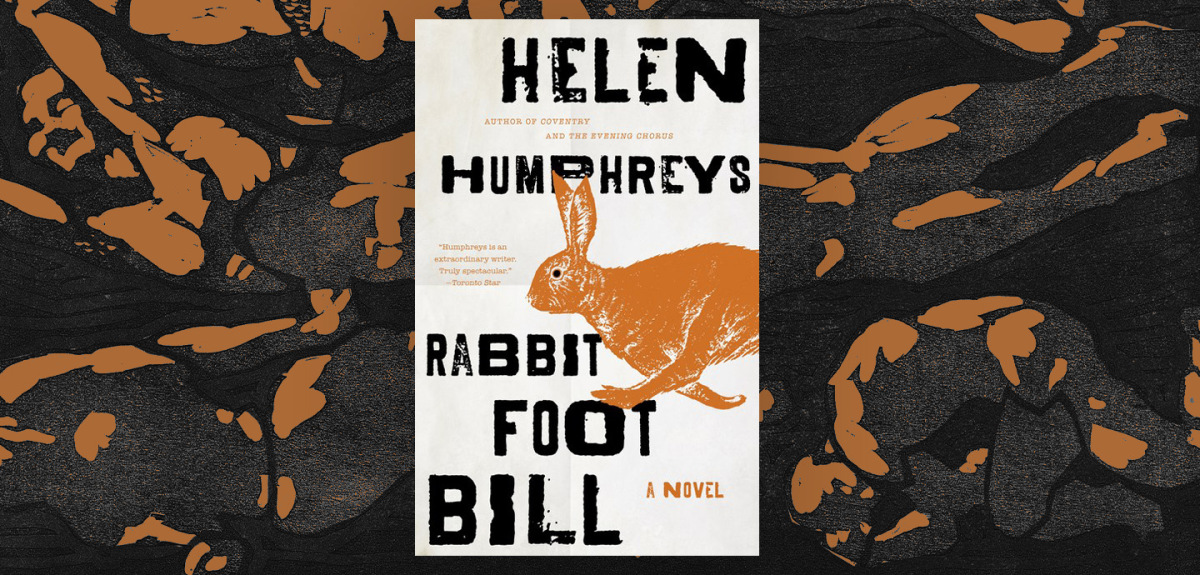[ad_1]
Celebrated Canadian writer Helen Humphreys’s novels almost always find their footing in historical events, often during or around war time, and they seamlessly blend meticulously researched factual detail with the elegantly understated storytelling we’ve come to expect from this author. Humphreys’s latest book, her ninth novel, is no different. Based on the true story of a murder that happened in the small prairie town of Canwood, Saskatchewan in 1947, Rabbit Foot Bill is a haunting tale of an unusual friendship, a shockingly violent act, and the lasting, devastating aftermath of war on returned soldiers and their families.
Twelve-year-old Leonard Flint, the son of Canwood’s new train stationmaster, spends a lot of time with the local eccentric Bill, who, having returned from the frontlines in Europe, lives on the isolated outskirts of town in a house carved out of the side of Sugar Hill. Leonard is aware that the adults around him find their friendship unorthodox, but in Bill Leonard finds acceptance and easy companionship that he doesn’t have from the other boys at school who routinely pick on him and beat him up: “‘Why do you want to befriend a tramp?’ asks my father, and I can’t tell him why. I can’t explain this feeling of running after Bill under the long, blue prairie sky. It is like he is leading me out of darkness, out of a loneliness I don’t even know I have.”
In this description, Humphreys begins to gently hint at the possibility that something more menacing underlies this friendship. The murky nature of the pair’s bond, and the ongoing question of what is really drawing Leonard—almost obsessively—to Bill, create a palpable tension throughout most of the novel and lead us, understandably, to make certain dark assumptions.
After Bill commits murder—an act that happens so quickly and almost matter-of-factly at the end of the novel’s first part—the story moves forward twelve years to 1959 as Leonard, now grown and a trained psychiatrist, is starting his first job at the Weyburn Mental Hospital in Weyburn, Saskatchewan. Assigned to care for a group of male patients with the ultimate aim of transitioning them into jobs in the surrounding community, he is also obligated to participate in the hospital’s experimental LSD drug trials. Leonard is highly skeptical of the therapy:
“While I was drawn to an institution like the Weyburn when I graduated from medical school, drawn to the newness of its approach to mental illness, I’m not sure I am comfortable with what the newness might demand of me…The trouble with taking part in an experiment such as this one is that I will be placed into a situation over which I have no control, and that always makes me feel uneasy, and a little panicked.”
Here again, Humphreys masterfully layers into her narrative a number of fascinating historical references; the Weyburn, opened in 1921, was one of Canada’s most notorious psychiatric institutions using electroshock therapy and lobotomy, among other so-called treatments, on patients. In the 1950s, the hospital conducted some of the first LSD experiments, to mixed effect, on patients suffering from alcoholism. The novel’s depiction of the Weyburn’s history—the patients’ living conditions in the early years, as well as the radical treatments Leonard witnesses—is a chilling reminder of how much progress we have made in treating mental illness.
For the neophyte psychiatrist, the Weyburn and its demands prove overwhelming, and when Leonard is unexpectedly brought face-to-face with his childhood past and the events of 1949, he begins to unravel. He knows he must work to uncover his repressed memories and learn the truth about his deeply-felt connection to Bill. As readers, we are every bit as frustrated as he is by this mystery, and it is a credit to Humphreys’s engaging style that we remain engrossed in Leonard’s search for answers as long as we do, wanting to know exactly what has happened to this very vulnerable character.
The revelation at the end of the novel is both surprising and not, and we are meant to understand that there is a larger force of underlying trauma that has set into motion the entire story of Leonard and Bill: “What do you owe the person who has saved you?” Leonard asks. “You owe them everything.” Told with tenderness and tremendous insight into human nature, Rabbit Foot Bill is really about the profound power humans have to create such damage in the lives of others, but also to offer such love and salvation.

FICTION
Rabbit Foot Bill
By Helen Humphreys
HarperCollins
Published August 18, 2020

[ad_2]
Source link
